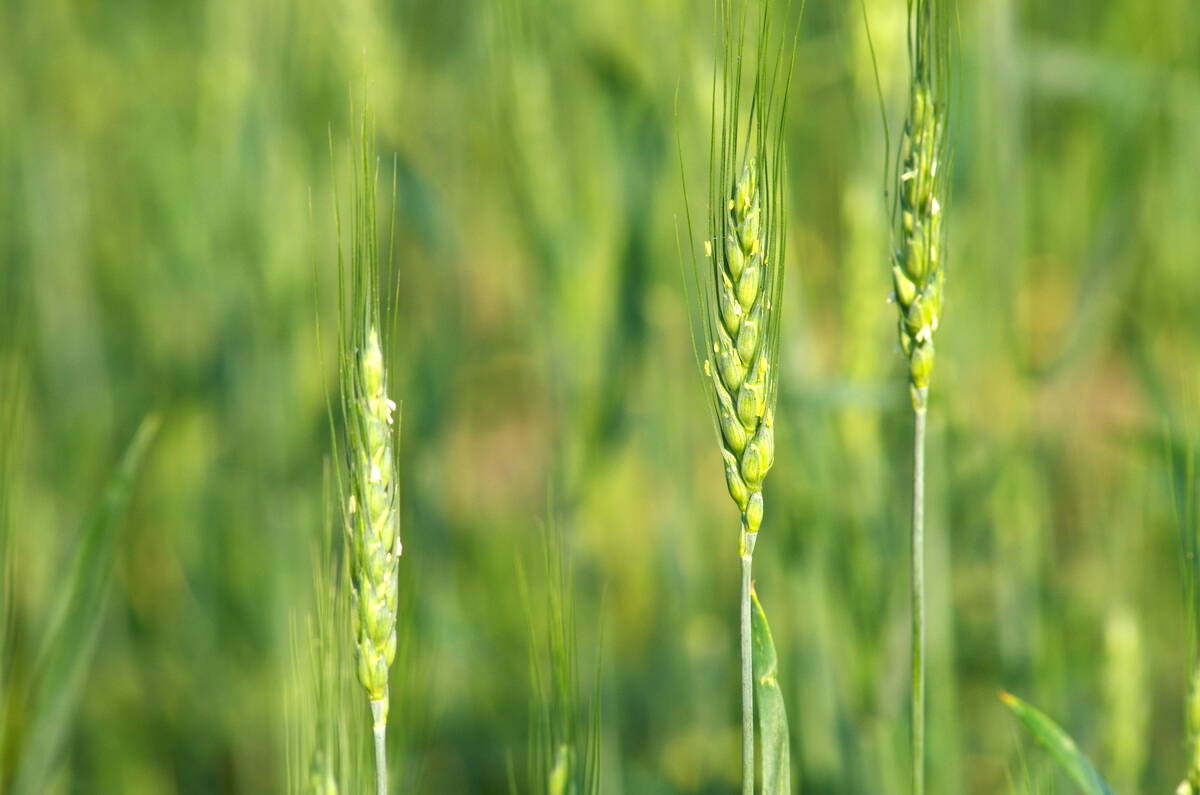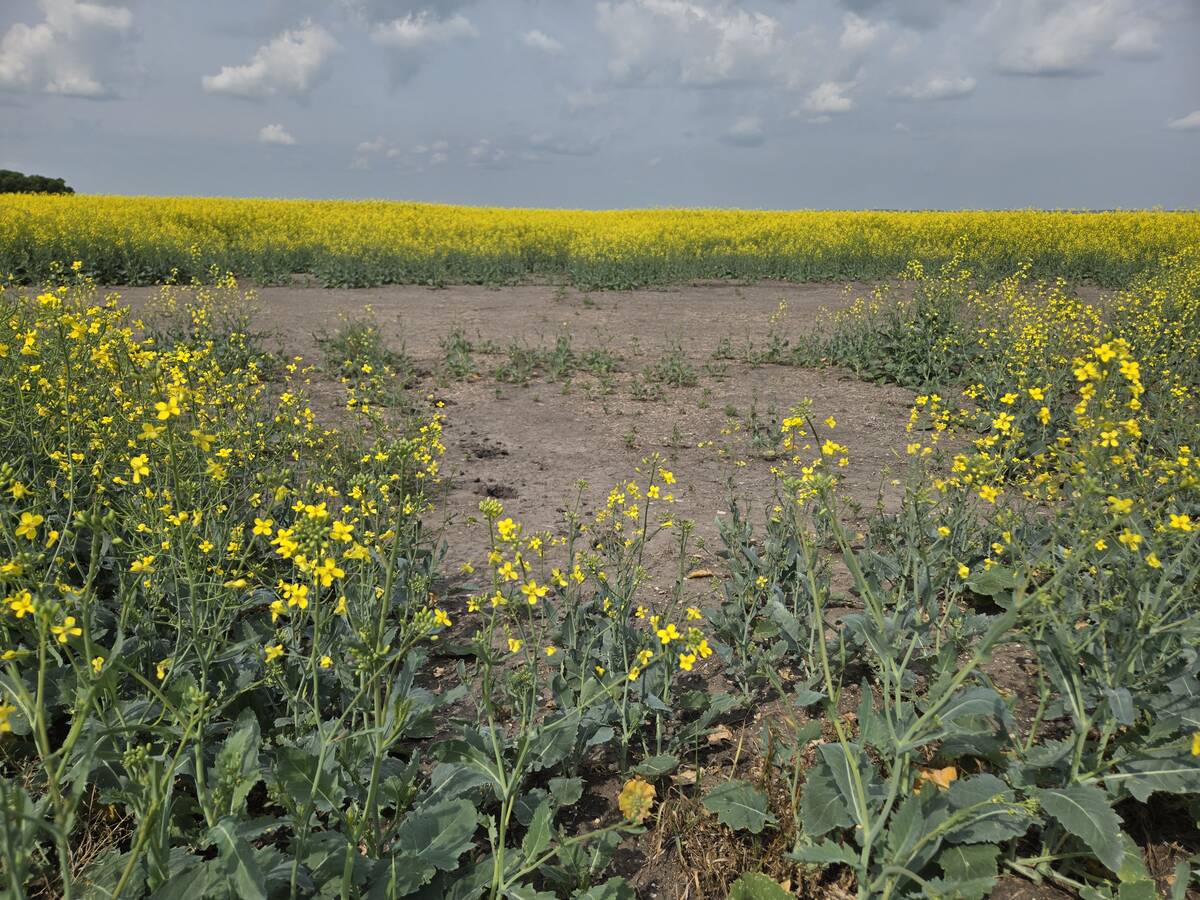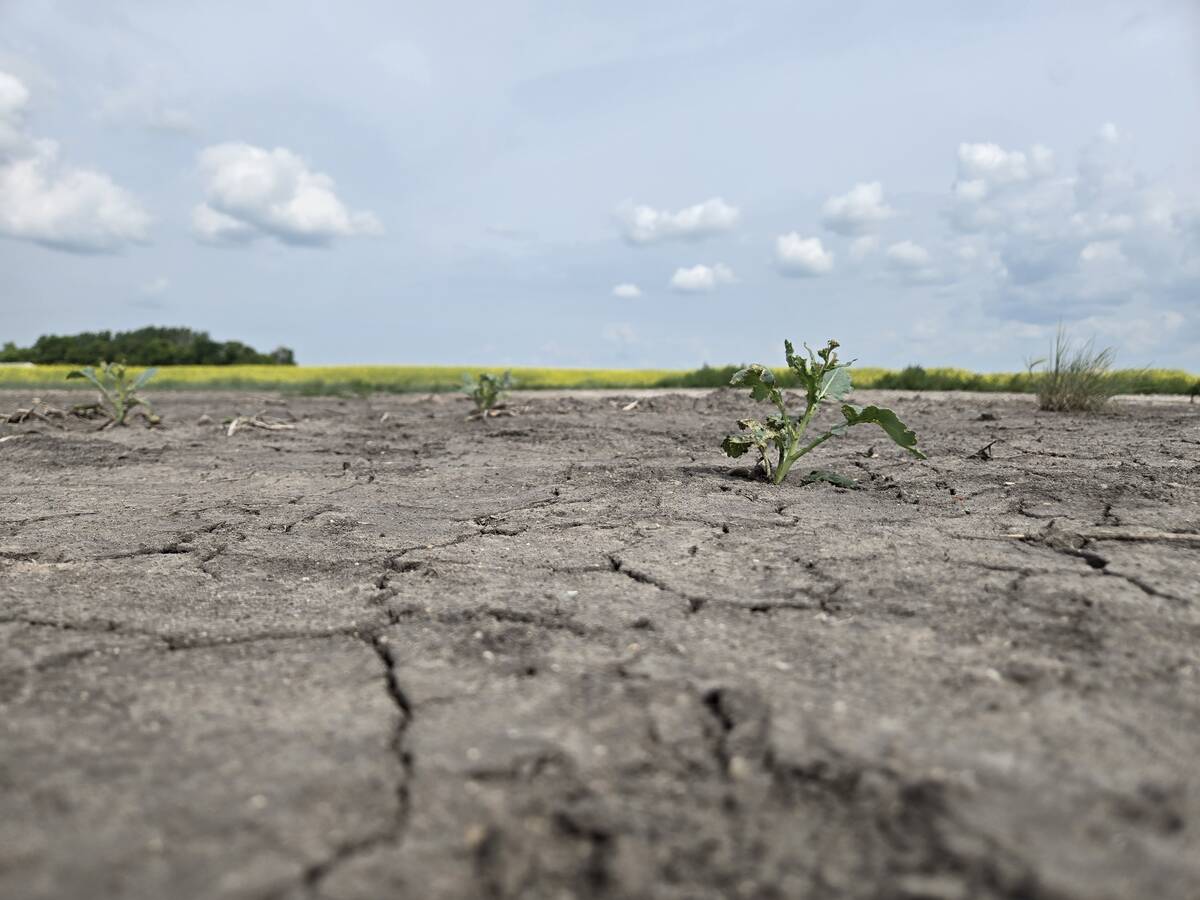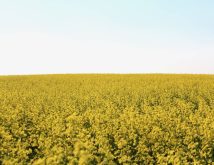Drought conditions in parts of Manitoba are creating significant crop stress and threatening yields, with some regions receiving less than a third of normal rainfall this growing season.
The eastern Prairies have received only 28 per cent of normal rainfall from May 1 to July 6, according to Nirmal Hari, an applied research specialist with Manitoba Agriculture.
“We’re super dry … And we didn’t get much rain, actually, and moisture in the last fall,” Hari said.
Read Also

Manitoba boosts stake in cereals centre to $23.5 million
Premier Wab Kinew said the additional project funds will help ‘Trump-proof’ the provincial economy.
WHY IT MATTERS: June brought some rain to the western Prairies and some patches of Manitoba have seen periods of wet weather, but a lot of the province is still crying for moisture.
The latest Manitoba Agriculture crop report shows widespread moisture deficits across the province’s agricultural regions. The east, northwest and Interlake regions have large areas with accumulations below 50 per cent of normal precipitation. The majority of central and southwest regions have received under 70 per cent of their long-term average precipitation.
No weather stations across any of Manitoba’s five agricultural regions have recorded above-normal precipitation this growing season from May 1 to July 13, according to the July 15 report.
Soybeans and wheat face challenges
The drought is affecting multiple crop types in affected regions, with soybeans and wheat showing particular signs of stress that could create harvest difficulties and quality issues later this season.
Soybeans are flowering unusually low on plants this year due to stress conditions, said Lionel Kaskiw, crop production specialist with Manitoba Agriculture. That could be a headache for farmers, who may need to bring their headers closer to the ground than they’d prefer.
“Rolling, I guess, is going to be very important,” he said during a Manitoba Agriculture Crop Talk webinar July 16. “I think this year we’re going to be having to cut fairly close to the ground, because a lot of those lower, lower flowers are, you know, a couple inches off the ground.”
The crop report also noted that southwestern soybeans are displaying flipped leaves in a response to heat and moisture stress. The crops still look fair, the province said, but the clock is ticking for fields to get rain.
In the central region, most soybean fields are at full bloom while, in the Interlake region, some fields are short with stagey stands due to dry conditions.
Wheat not filling properly
Drought conditions have also translated to wheat kernel development problems in affected areas, said provincial cereals specialist Anne Kirk. Bottom and top spikelets on wheat heads are not developing properly.
“We’re seeing a couple of the bottom spikelets either likely having aborted kernels and not developing properly…This would be a result of stress in many parts of the province — likely lack of moisture, if it’s been a dry area, or perhaps heat stress,” Kirk said.

The crop report notes that central Manitoba cereal crops are expected to yield poorly in areas with insufficient rainfall, with some fields showing poor early season root growth. Patches of the region are showing signs of moisture stress and, in extreme cases, crop death. Farmers in the Interlake, meanwhile, have noted premature ripening in wheat and barley due to lack of moisture.
White or yellow patches are appearing in wheat fields in dry areas, particularly in areas with poor water-holding capacity, Kirk said.
No roots, no resilience
Poor root development leaves plants less able to weather dry conditions, since deeper soil moisture is out of their reach.
Unfortunately, that’s been a flaw that Kirk has been observing this year.
“I’ve seen extremely poor root development. So basically, no roots being developed because it was so hot and dry early on in the season,” she said.
Other crops also dry
Other crops are also showing stress signs.
The crop report indicates canola is performing poorly in areas with less rainfall, sometimes turning a bluish colour associated with moisture stress. In the northwest, recent high temperatures have caused some pod abortion.
Field peas are stressed in areas with limited moisture, while corn on light sandy soils without rainfall is showing severe signs of stress in the southwest.

Recent rainfall provides limited relief
While recent rainfall has taken some pressure off crops in areas lucky enough to get it, crop specialists say the damage may already be done for many crops approaching critical development stages. The weekly report shows isolated rainfall and thunderstorms resulted in varying precipitation amounts over the past week, ranging from no moisture to 38.8 millimetres.
The extreme conditions have forced some farmers to reconsider fungicide applications, with many skipping treatments due to poor yield potential in drought-stressed fields.
“I know in our area, quite a few people have it (but) didn’t spray for fusarium because the yield potential was so low and it was so dry,” Kirk said.
Livestock operations also affected
The moisture shortage is also affecting livestock operations. Many areas are experiencing reduced dugout water levels, leading to emerging water quality issues. Manitoba Agriculture has reported a rise in inquiries about managing blue-green algae and duckweed through testing and treatment methods.
Forage crops have also been hit. Early reports suggested that Manitoba’s first cut would be short, but not as short as in the western Prairies. At the time though, many beef producers had yet to cut.
Later reports saw yields diverge — nearly normal in areas with rain, according to the July 8 crop report, but with some drier patches reporting as low as 25 per cent of their normal harvest.
As of July 15, the province reported that —with the exception of some northwest patches — yields in the prior week had been average to below-average.
Furthermore, that might be the only cut that many forage growers get.
”In most cases, a second cut for beef herds is not expected,” the more recent report noted. “Dairy producers are currently harvesting their second cut, but yields are low.”
Producers are expected to rely on carryover feed for the upcoming winter-feeding period.
Pastures did see some green up in areas that got rain.
















